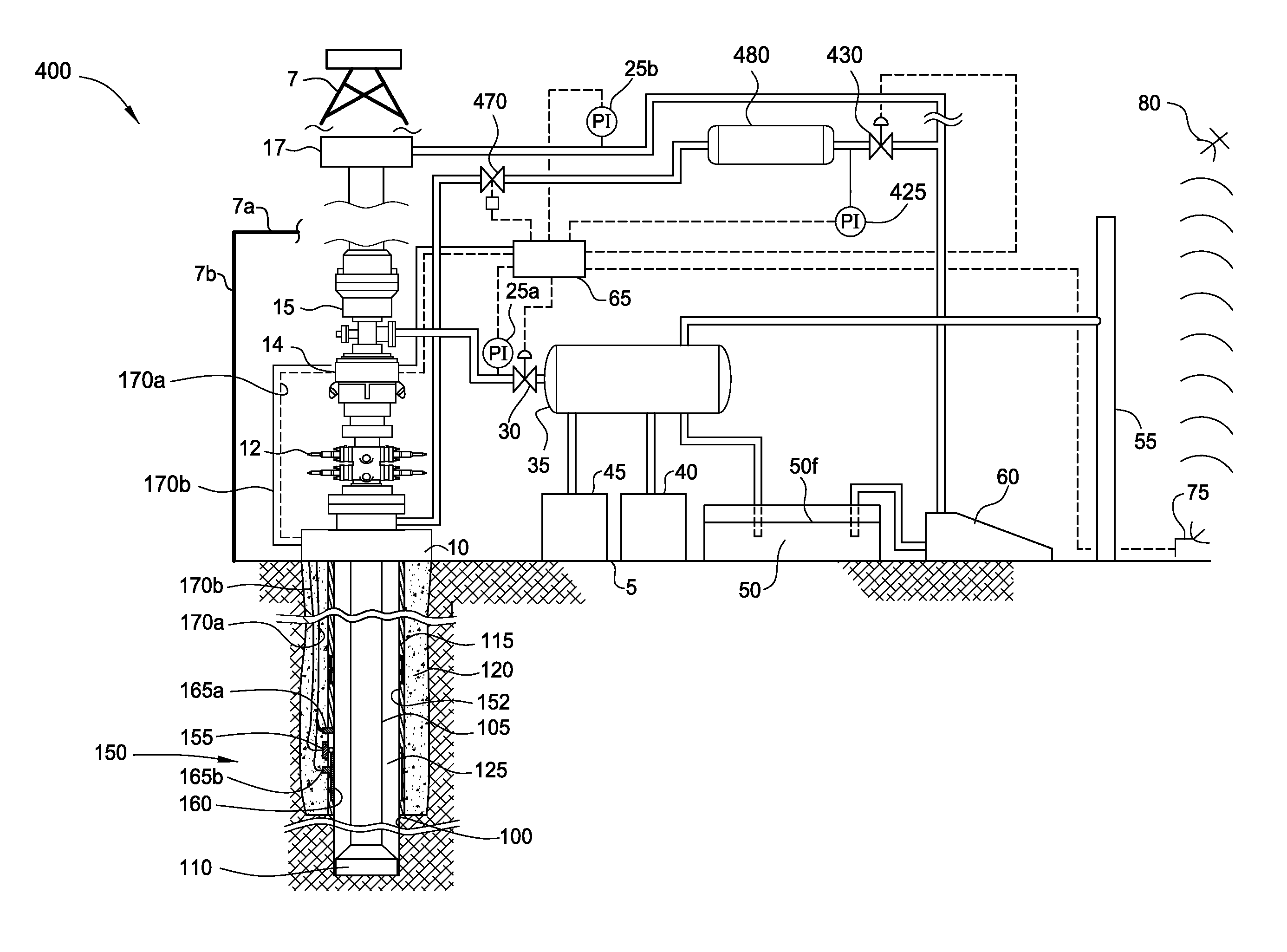Annulus pressure control drilling systems and methods
a technology of pressure control and pressure control, applied in the direction of drilling pipes, surveying, borehole/well accessories, etc., can solve the problems of reducing the drilling rate, reducing the permeability, and causing formation fractures
- Summary
- Abstract
- Description
- Claims
- Application Information
AI Technical Summary
Benefits of technology
Problems solved by technology
Method used
Image
Examples
Embodiment Construction
[0053]FIG. 2 is a schematic depicting a land-based drilling system 200, according to one embodiment of the present invention. Alternatively, the drilling system 200 could be used offshore (see FIG. 2B). The drilling system 200 includes a drilling rig 7,7a,7b that is used to support drilling operations. The drilling rig 7,7a,7b includes a derrick 7 supported from a support structure 7b having a rig floor or platform 7a on which drilling operators may work. Many of the components used on the rig such as an optional Kelly, power tongs, slips, draw works and other equipment are not shown for ease of depiction. A wellbore 100 has already been partially drilled, casing 115 set and cemented 120 into place. The casing string 115 extends from a surface of the wellbore 100 where a wellhead 10 would typically be located. A downhole deployment valve (DDV) 150 is installed in the casing 115 to isolate an upper longitudinal portion of the wellbore 100 from a lower longitudinal portion of the well...
PUM
 Login to View More
Login to View More Abstract
Description
Claims
Application Information
 Login to View More
Login to View More - R&D
- Intellectual Property
- Life Sciences
- Materials
- Tech Scout
- Unparalleled Data Quality
- Higher Quality Content
- 60% Fewer Hallucinations
Browse by: Latest US Patents, China's latest patents, Technical Efficacy Thesaurus, Application Domain, Technology Topic, Popular Technical Reports.
© 2025 PatSnap. All rights reserved.Legal|Privacy policy|Modern Slavery Act Transparency Statement|Sitemap|About US| Contact US: help@patsnap.com



